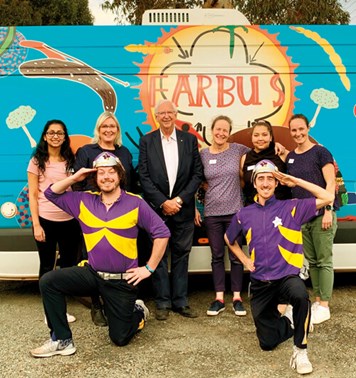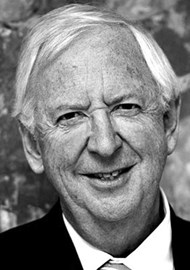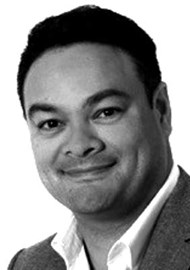The world is in the midst of a pandemic, and global health is severely threatened by this novel coronavirus which has caused over three million infections of COVID-19 and claimed more than 228,000 lives to date*. Societies and health systems in disadvantaged areas of the world could have catastrophic outcomes. Comparisons of ear problems are a good representation of health in an unequal society. Studies have shown that close to 10% of Aboriginal children have ear or hearing problems (versus 3% in non-Aboriginal children). Clinical Professor, Harvey Coates of the University of Western Australia, and Associate Professor, Kelvin Kong – the first Aboriginal surgeon in Australia – have worked relentlessly over the years to highlight and improve Aboriginal and Torres Strait Islander (ATSI) Health. This article, coinciding with the release of the ATSI Ear Manual, looks at the issues surrounding ATSI ear health, providing an overview of the multidisciplinary measures which have been implemented to close a widening gap in ear health outcomes.
*Figures correct when published online .
The last 10 years have seen steady improvement in Aboriginal and Torres Strait Islander (ATSI) ear and hearing health, with many new initiatives by government, Aboriginal Medical Services (AMS), non-government organisations (NGOs), specialist medical and paramedical groups and researchers.
The main impetus for change has come from the AMS with their community controlled health organisations implementing culturally appropriate primary healthcare at the coalface, Commonwealth and State Governments under the Roadmap for Hearing Health programme from Minister for Indigenous Australians (and the first Aboriginal Member of Parliament in Australia) Honourable Ken Wyatt AM, MP, and the newly created Centre for Research Excellence (CRE) in Otitis Media based at Darwin’s Menzies School of Health.
Realisation that public health measures and a holistic approach are critical in ameliorating the effects of otitis media (OM) and its sequelae has led to a renewed attention to the social determinants of health, especially overcrowded housing, access to clean water, adequate and healthy nutrition, hygiene, and medical care. The linchpins in this process are the Aboriginal Health Workers (AHWs), both those who are community AHWs and those who work with AMS and visiting multidisciplinary teams – ENTs, audiologists, GPs and nurses. AMS, government and NGO teams with intensive programmes that include frequent community visits after appropriate community consultation and the development of mutual trust and responsibility, have historically had the greatest positive impact on ear health in rural and remote Australia. The development of OM guidelines by the CRE and an app for treatment of OM (OMApp), utilising evidence-based medicine and systematic reviews, has ensured consistent treatment for OM in ‘at risk’ children.
Award-winning programmes by the Queensland Government (Deadly Ears), Kimberley Aboriginal Medical Service, and the Earbus Foundation of Western Australia have shown outstanding outcomes with frequent consistent community visits. And, because more Aboriginal people live in urban areas than remotely, AMS are essential in the cities and towns, where, though the social determinants of health may be easier to address, there is still a high prevalence of middle ear disease, especially otitis media with effusion (OME).
The application of translational research in OM to social, clinical and educational outcomes in ATSI populations has transformed the condition in Australia. Multiple trials of treatments including maternal vaccination, topical and systemic antibiotics, and agents that dissolve bacterial biofilm have been performed successfully.
The addition of swimming pools to over 20 remote communities has seen a reduction in OM, trachoma, scabies, rhinitis and chest infections while the ‘no school, no pool’ rule has reduced truancy, and the social benefits effect to the community has been significant. Hearing Australia is a government-sponsored agency which provides hearing services to ATSI children under 16 and those older than 50 years old, or who are participating in a community development programme (CDP), as well as pension card holders and most veterans.
Additionally, it supplies hearing amplification systems to school classes and individual hearing aids to children with hearing loss. Yet, the rate of OM and its sequelae, especially CSOM, remains unacceptably high, as it does in other first world countries with first nation people, and many third world countries. In all these countries the elements contributing to the high rates of CSOM and recurrent acute otitis media are present – the poverty leading to the devastating effect on general health and wellbeing and the overwhelmed immune systems unable to cope with the multiplicity of bacteria colonising the nasopharynx and middle ear. Streptococcus pneumoniae, Haemophilus influenzae and Moraxella catarrhalis remain the main pathogens in acute otitis media.

Harvey Coates with members of the Earbus Foundation.
There has been a modest reduction in the rates of acute otitis media and glue ear with pneumococcal conjugate vaccination. This has resulted in Haemophilus influenzae being the most common middle ear pathogen currently. The recalcitrant nature of CSOM with Pseudomonas aeruginosa as the main pathogen is compounded by the ability of bacteria to utilise preservation strategies, including biofilm, to resist topical and systemic antibiotic therapy. Cholesteatoma is being detected more often in remote Australian Aboriginal settlements both in chronic OME and CSOM, with rates varying from 10% to nearly 20%.
The main impact of CSOM and OME in ATSI children is hearing impairment and this compromises their quality of life. The impact of hearing loss from the early months of life through to the critical first 1000 days of speech and language development and ranging into the school years is problems acquiring language, (especially where English maybe the second or third language), inattention, truancy, social isolation and subsequent early school leaving, drug and alcohol problems, unemployment and clashes with the judicial system. The trajectory is easily seen in case studies, but hardly seen in retrospect. Even at university level, hearing screening of Aboriginal university students found that 15.5% had unilateral or bilateral hearing loss, and in young women on remand in a Western Australian prison, 46% had long term handicapping hearing loss. Australia has an estimated 100,000 people, mainly ATSI children, with chronic tympanic membrane perforations, far beyond the capacity of otolaryngologists to successfully repair.
So, how do we address this silent epidemic? As mentioned before, we do this with community-based organisations educating parents and treating the children at the earliest stages of infection, with frequent opportunistic hearing screening by AHWs and nurses, utilising telemedicine for the difficult cases, and expedited treatment with ventilation tubes with/without adenoidectomy and myringoplasties for those with OME and chronic dry tympanic membrane perforations. We must educate our future otolaryngologists to be culturally aware, and to participate in and advocate for ATSI health programmes. Simultaneously, but on a separate front, we need to advocate, develop and ensure pathways into addressing professional inequality on vocational training for ATSI people.
In order to close the gap in ear and general health equity, we need to consider the seven steps suggested by respected public health advocate, Professor Ian Ring, recently:
- Setting of achievable and fully budgeted targets.
- Needs based funding – Funding based on the burden of disease, which is three times greater in ear health in ATSI populations than in non-ATSI people.
- Focus on services – From resourcing and policy issues at the national level through to staffing, training and resourcing at the regional level.
- Training – Development of a national training plan to ensure all involved in the field are trained in culturally appropriate service delivery, with capacity building for ATSI staff a linchpin.
- Management – Development of a formal, integrated, multi-layered management system, underpinned with information and evaluation systems.
- Continuous quality improvement – The need for proper systems to measure, monitor and evaluate the quality of services. Output assessment is good, outcomes assessment essential.
- Learning from national and international experience – Adaptation of successful programmes as mentioned earlier – AMS, Deadly Ears and Earbus Foundation of WA using systematic application of current knowledge to the local regional services.
These goals and aspirations are not novel – they are standard practice throughout much of the world. With First Peoples’ leadership and the will and funding of government, we can together close the gap in ear and hearing health in Aboriginal and Torres Strait Islander people.






